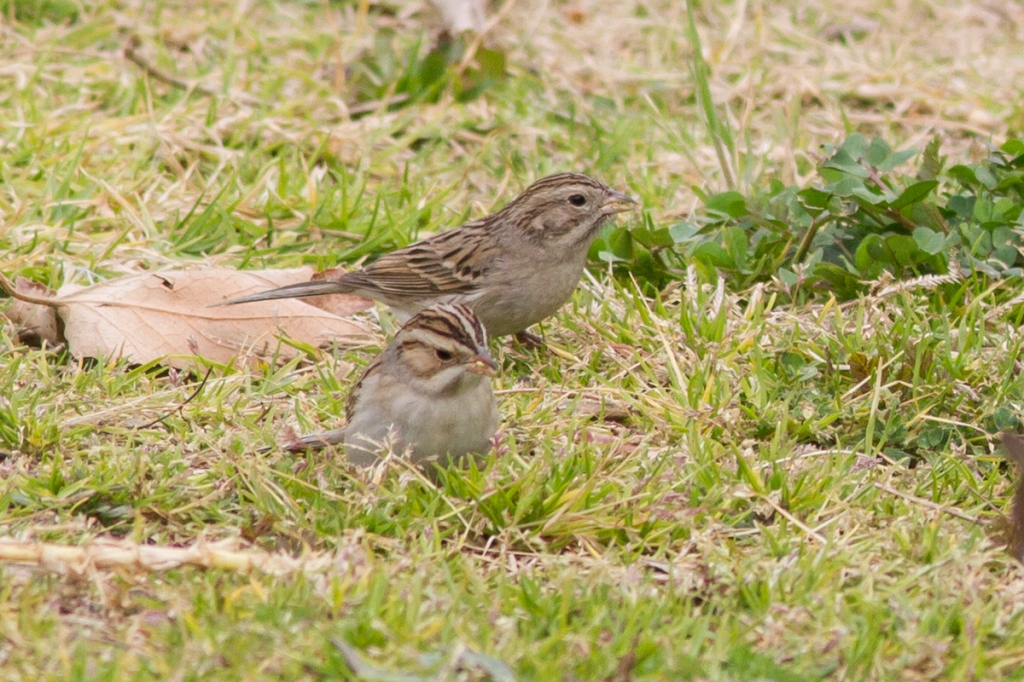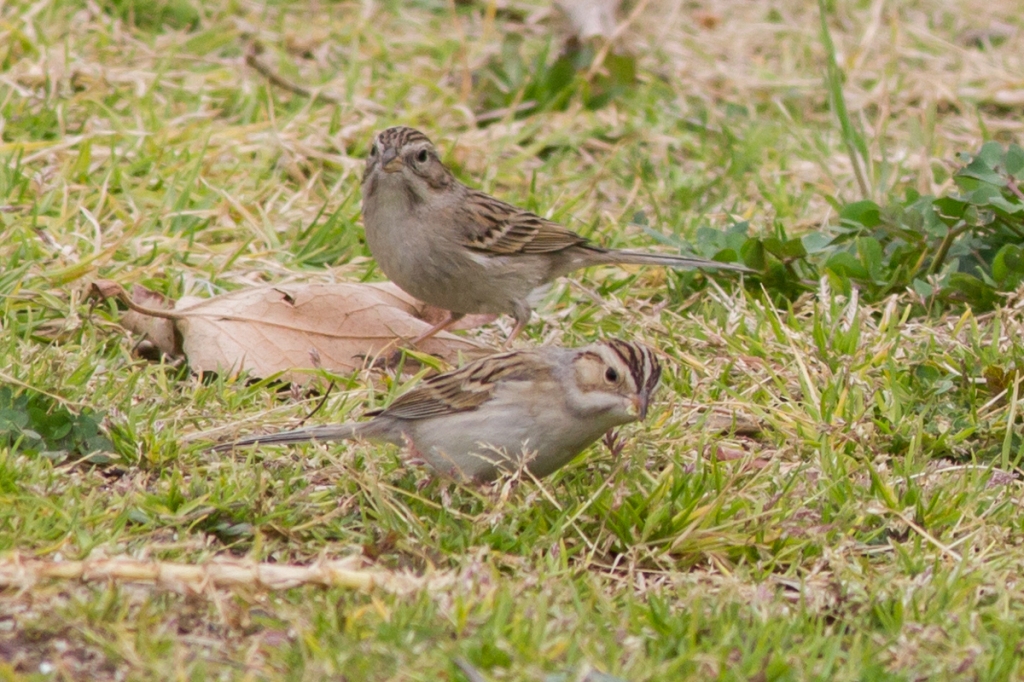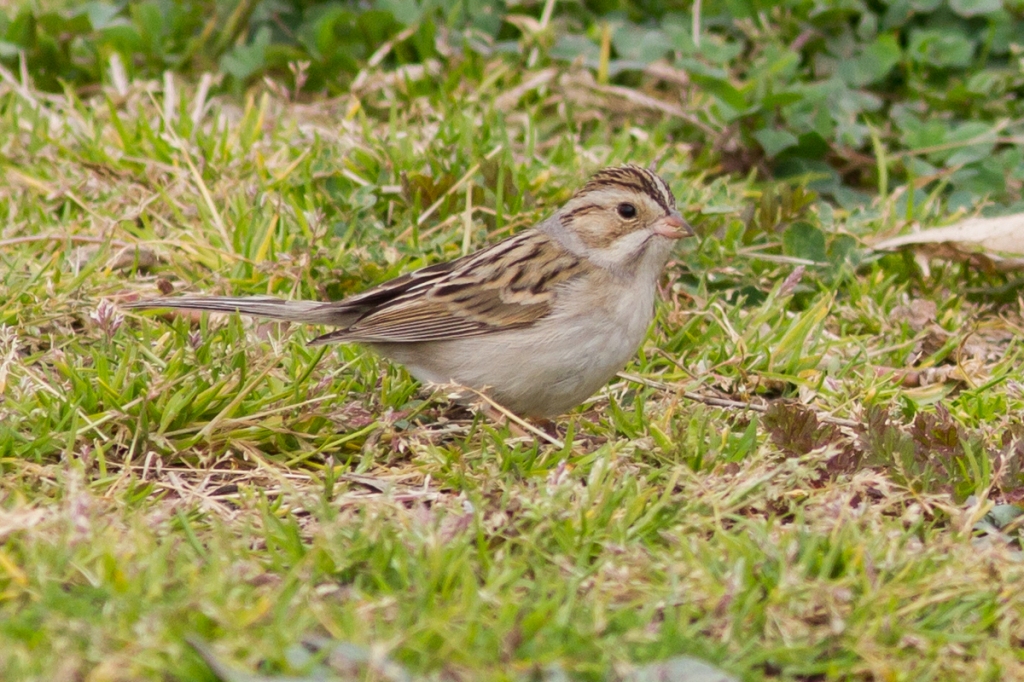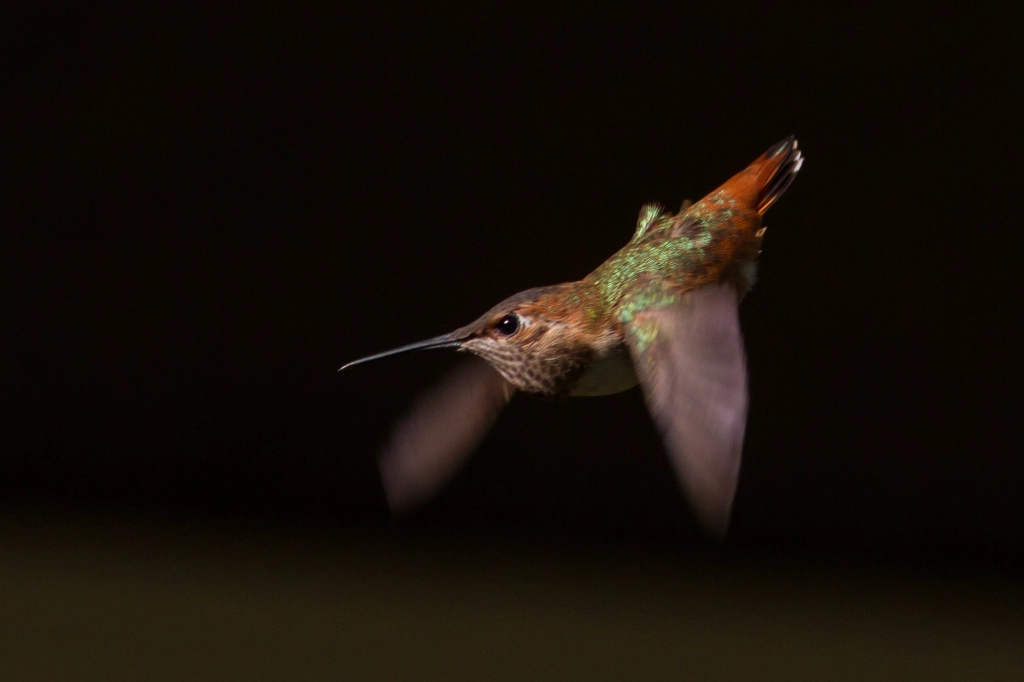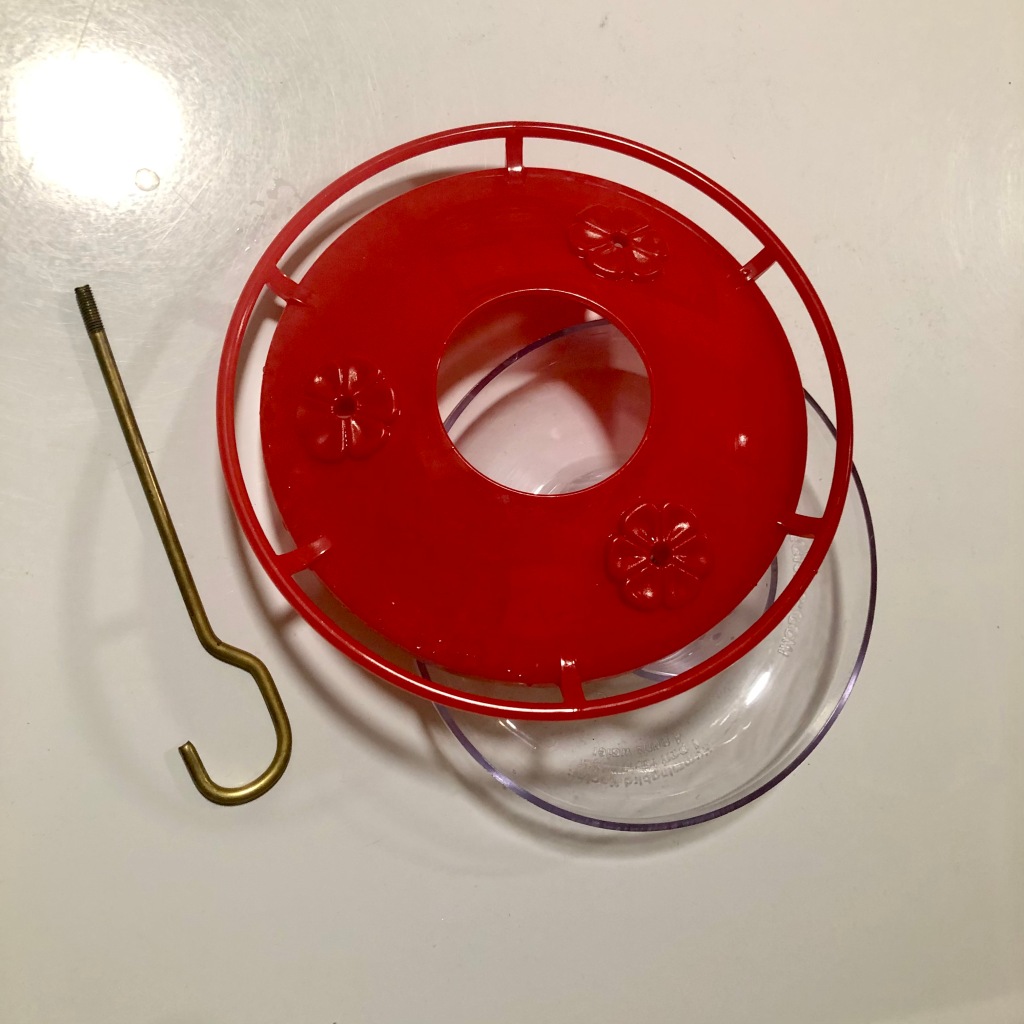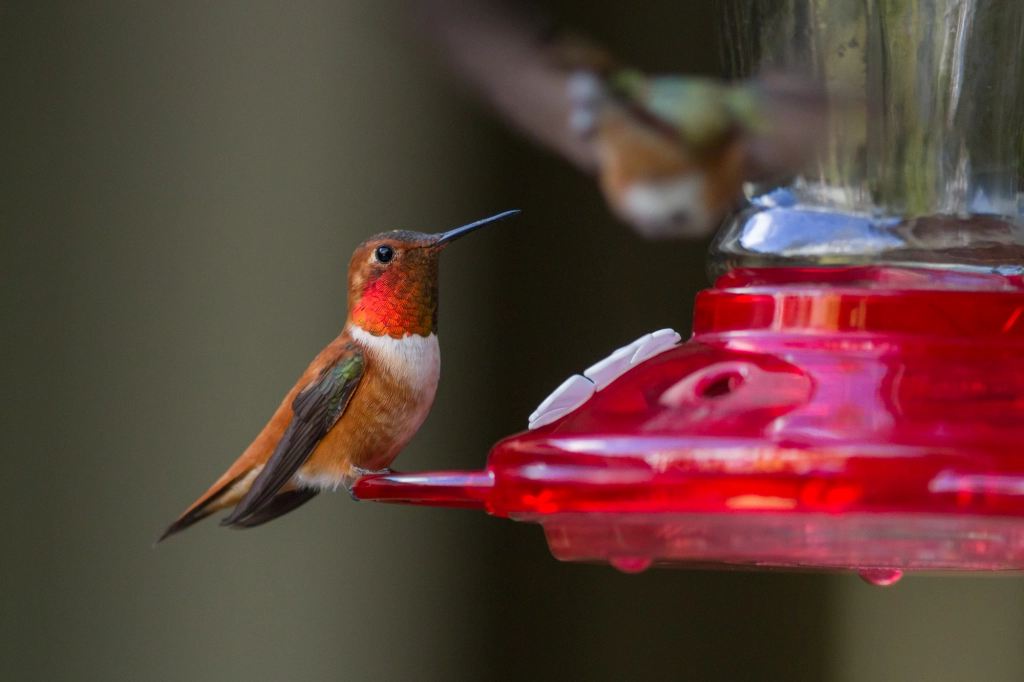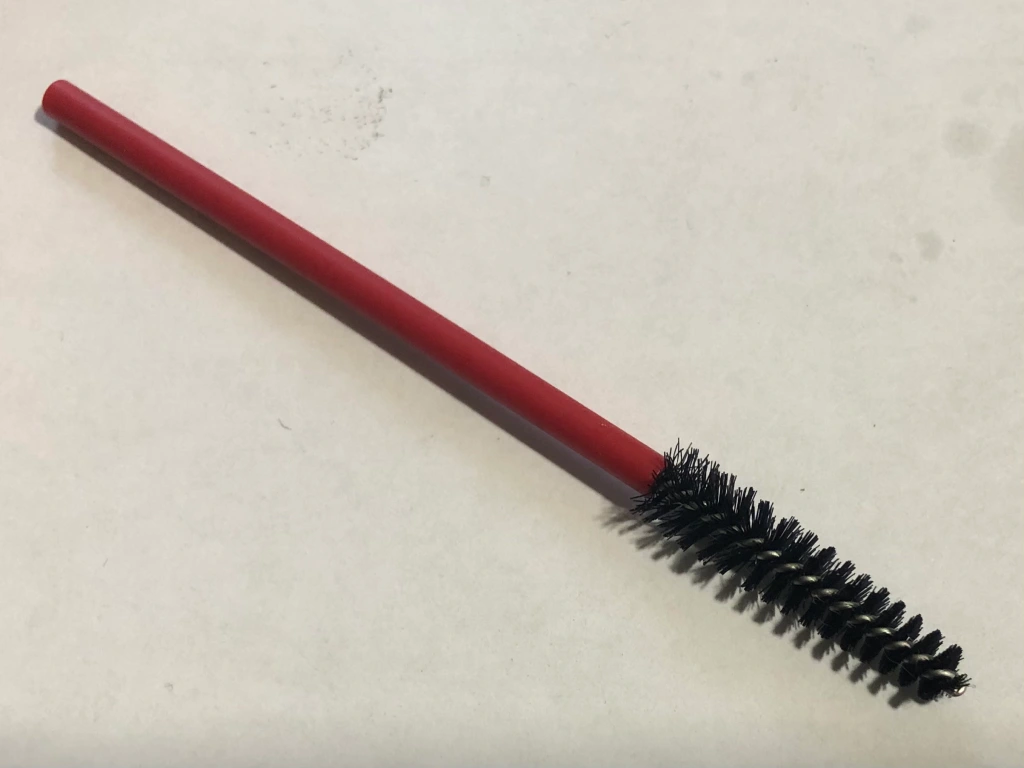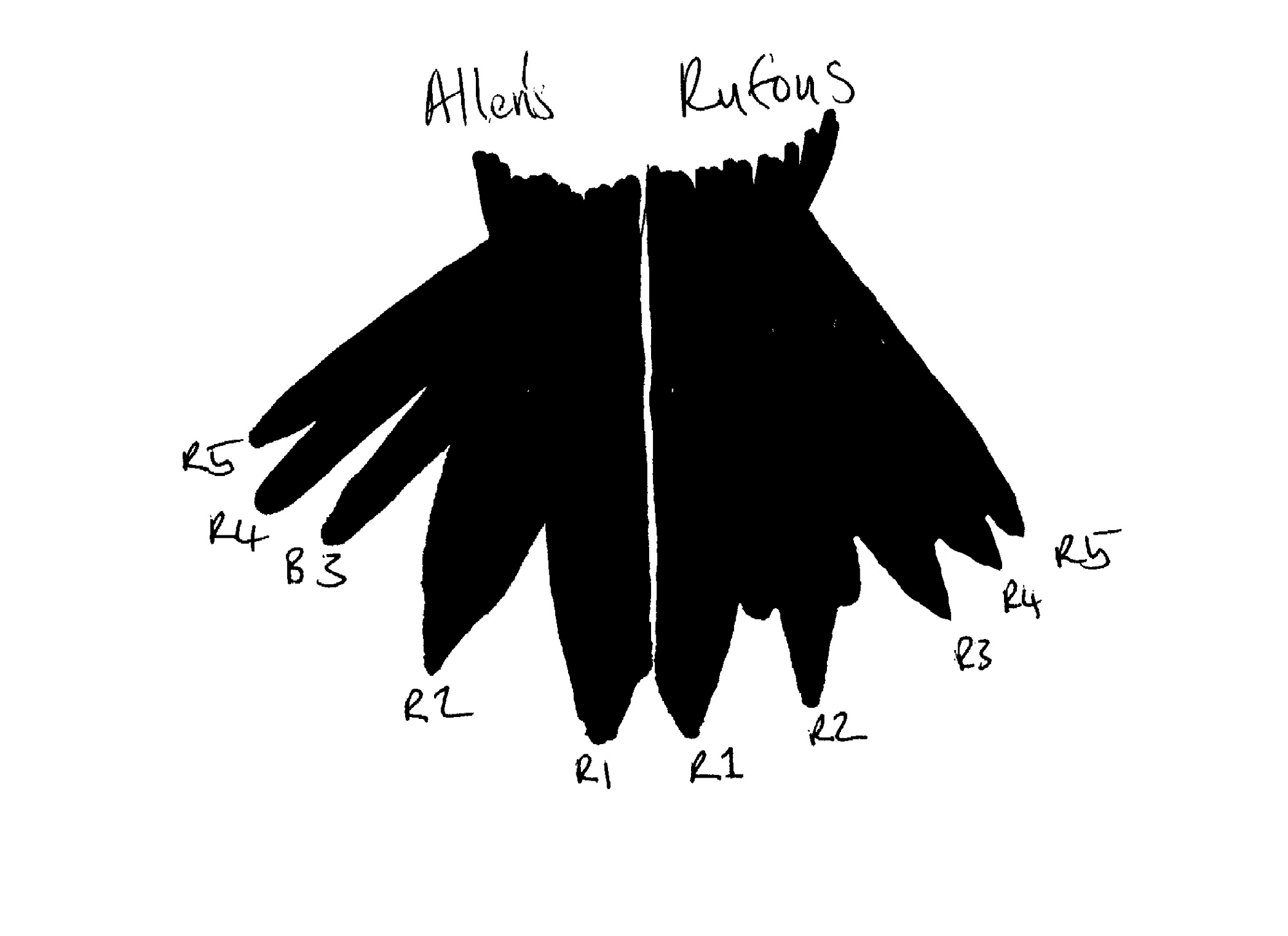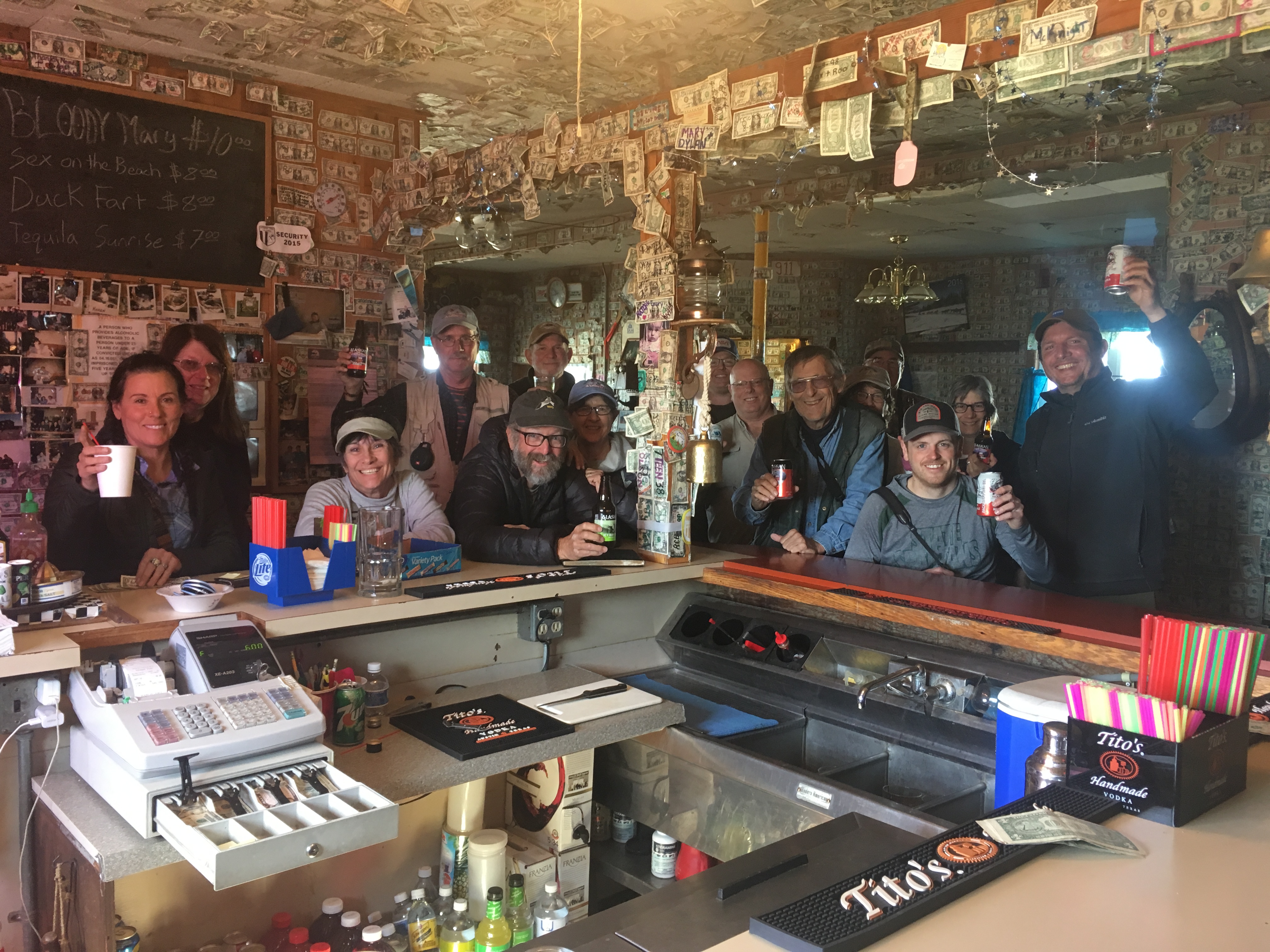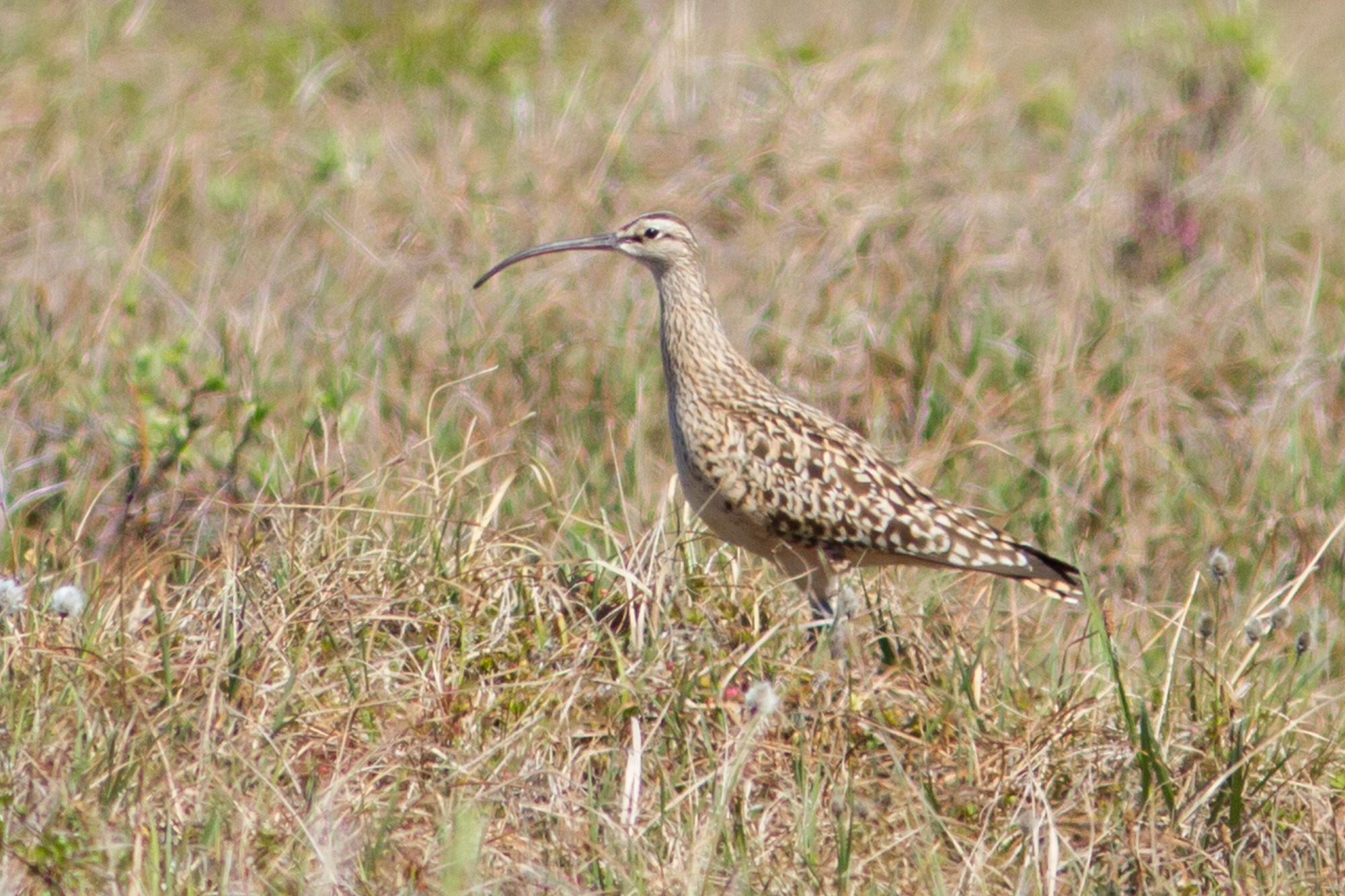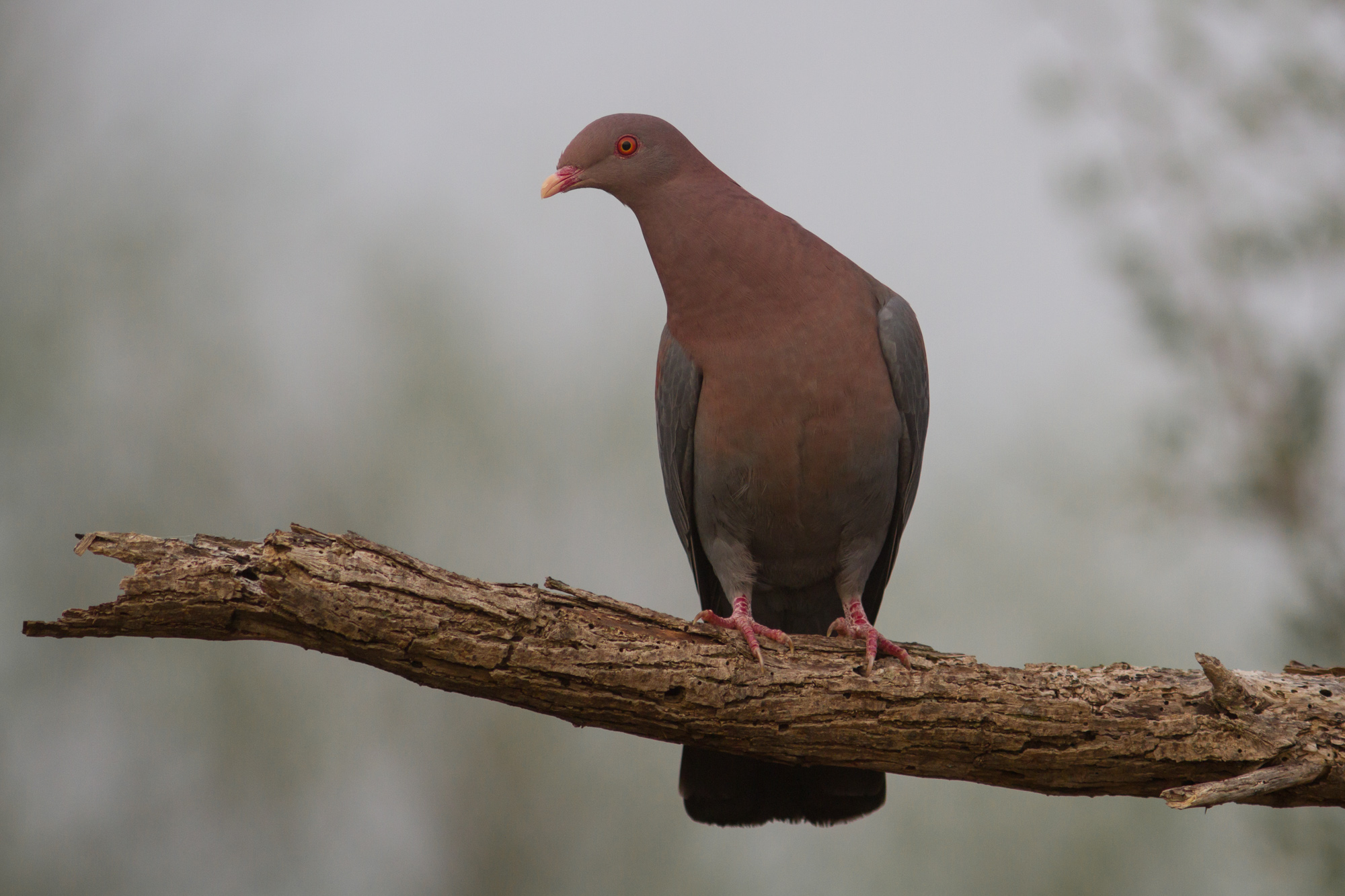
Three-toed Sloth – Luke Tiller
Day 1
Our Migration Spectacular Tour kicked off with a relaxing arrivals day at Canopy Tower, our home for the next week. The easy day gave the group time to settle in and just observe some of the many birds and other flora and fauna to be found at Canopy Tower. Among the regular bird species to be found around the tower: Palm Tanager, Plain-colored Tanager and Green Honeycreeper we had plenty of birds that just a few weeks before had been up in the forests of the United States and Canada. These familiar birds were either arriving on their wintering grounds or passing through Panama for points south: Broad-winged Hawk, Eastern Kingbird and Acadian Flycatcher.
The two migrant highlights on the day had to be a couple of latish Canada Warblers that were both bound for northern South America: Colombia, Ecuador or Peru. Of the birds local to Canopy Tower, Violet-bellied Hummingbirds are always a highlight, additionally nice views of hunting Short-tailed Hawk and scoped views of a perched Blue-headed Parrot are hard to beat.
We ended our day with a hearty meal and a proper introduction to the tower and our plans for the week from our trusty guide for the week Alexis Sanchez.

Juvenile Mississippi Kite – Luke Tiller
Day 2
Following a relaxed first day around the tower we were soon into the thick of the birding action with a ride out to Finca Bayano. This predominantly agricultural spot, east of the airport, is great for raptors and the rice fields here approximate good habitat for waders, shorebirds and ducks too.
The habitat here is unlike anything else on the tour itinerary which meant there were lots of birds to be found that were unlikely to be seen anywhere else too. After a couple of quick stops, we were graced by the presence of one of our main targets for the day, a stunning Pearl Kite. This is a somewhat uncommon bird in Panama, but one that seems to have a favored tree at Finca Bayano. A stunning little raptor that must rate as one of the favorites of the tour. Other treasured discoveries here included Pied Water-Tyrant, Plain-breasted Ground Dove and Fork-tailed Flycatcher.
The rice fields yielded a wealth of herons and egrets including prehistoric Wood Storks and regal Cocoi Herons. Highlights of these marshes though were a couple of stunning Bare-throated Tiger Herons, a specialty locally of Finca Bayano, and an uncommon migrant in the shape of a Roseate Spoonbill, which was probably as exciting for our guide Alex as it was for anyone else in the group.
The raptors at Finca provide much of the draw and to our Pearl Kite sighting we soon added White-tailed Kites, Roadside Hawks and snazzy Gray-lined Hawks. Two other specialty raptors are found here as well and we finally garnered great looks at both the somewhat cryptic Lesser Yellow-headed Vultures hiding among the Turkey Vultures and another raptor highlight of Finca Bayno: the dazzling Savanna Hawk.
All around us there were signs of raptor migration from previous days with Broad-winged Hawks and even a couple of late Mississippi Kites scattered through the surrounding woodlands. As the sun picked up these migrant hawks began to start to find thermals and renew their migration south. Soon there were thousands of Broad-winged Hawks, Swainson’s Hawks and Turkey Vultures filling the skies around us. An amazing spectacle to behold.

Gray-capped Cuckoo – Luke Tiller
With our visit to Finca Bayano drawing to a close, I decided I wanted to try and get a look at a couple of hummingbird species we had thus far missed. We stopped the van at a likely spot on the way out and disembarked. It proved to be an auspicious decision. We had already done rather nicely with cuckoos on the morning with Greater Ani and Striped Cuckoo already nice additions to the more common Smooth-billed Anis and Yellow-billed Cuckoos. When I got on a bird one of our group had requested help with the identity of I immediately realized we were looking at a another cuckoo species, a Coccyzus cuckoo that I didn’t recognize. As I got Alex on it, it was clear it was a cuckoo he wasn’t 100% familiar with either. After some fumbling we finally got the whole group on the bird and our group photographer even managed to get a couple of pretty nice photos of what turned out to be just the eighth record of Gray-capped Cuckoo for Panama. This species is uncommon across its usual range and was an incredible find for the tour – a truly rare bird species (more on this species online here).
This was the perfect way to end our first full morning and underlined the decision to add this wonderful birding site to our tour itinerary.
After lunch we had quick stops at Costa Del Este and Panama Viejo. Though there was a nice mix of water birds and coastal species, there wasn’t much of note at either stop beyond the regulars and with a little rain settling in we decided to head back to the tower after enjoying some nice views of a “Mangrove” Yellow Warbler.

Geoffroy’s Tamarin – Luke Tiller
Day 3
After a very active day the day before we decided to start out with a nice relaxing morning around the lodge. The morning however kicked off with a bang when a migrant Black Swift appeared up over the tower heading for wintering grounds in Brazil. Amazing to think that less than 20 years ago the wintering grounds of this enigmatic breeding bird from the US were still unknown and were suspected to be in well north of this sighting in Mexico. More magical migration moments logged over that morning included Purple Martin, Swainson’s Thrush and a pretty Blackburnian Warbler.
Our hike down the lodge entrance road wasn’t overly birdy but was productive for a couple of desirable species including Golden-crowned Spadebill, Stripe-throated Hermit and avian highlight of the morning the diminutive Black-capped Pygmy-Tyrant (one of the world’s smallest passerine birds). The moment of the morning however had to be our encounter with Panamanian Night Monkeys. These awesome nocturnal monkeys are only found in Panama and the Choco region of Colombia (with a few unconfirmed Costa Rican sightings). Being nocturnal they are very difficult to see and so visiting them at a roost discovered by Alexis was an incredible privilege.

Panamanian Night Monkey – Luke Tiller
After lunch we headed for Gamboa Rainforest resort. Though it was sprinkling on and off we didn’t allow the wet weather to spoil the birding here. In fact, the puddles of water seemed to aid views of some birds, with both Rufescent Tiger-Herons and Gray-cowled Wood-Rails splashing through puddles to our delight.
Showier highlights here included our first Yellow-throated Toucans perched on the hillside above the resort as well as a stunning Crimson-crested Woodpecker and our only Flame-rumped Tanagers of the tour. Not to be outdone were seven species of warblers and a bunch of other migrants like Scarlet Tanager, Summer Tanager and Rose-breasted Grosbeak. Local species highlights here included Masked Tityra, Cinnamon Becard and Golden-collared Manakin.
We ended our afternoon out with a stop at the Canopy B&B where we enjoyed both some cover from the drizzle and some nice feeder action. Avian delicacies here included Whooping Motmot, Golden-hooded Tanager, Crimson Backed-Tanager and Buff-throated Saltator joining some Agoutis at the Banana feeders. Not to be outdone the hummingbird feeders were equally active with Rufous-tailed Hummingbirds dominating, but both Stripe-throated and Long-billed Hermits trying to get in on the action. A nice easy birding end to a damp day.

Yellow-throated Toucan – Luke Tiller
Day 4
This morning started with a jaunt out to perhaps one of the tropics best birding locations: Pipeline Road. First up we needed to pay homage to the White-throated Crakes of Summit Ponds. Again we listened forlornly to their distinctive calls without laying eyes on one. We weren’t completely out of luck though here as we managed to get unexpectedly nice views of one of the Least Bitterns that call the ponds home.
Our journey along the road found the birding slow but steady with avian treasures revealing themselves as we journeyed: spiffy Black-breasted Puffbirds, a lurking streamside Green Kingfisher, an impressive Crimson-crested Woodpecker and a confiding Gray-breasted Dove that posed graciously while we all got scope views. As we worked our way down the road, we uncovered migrant birds too including a trifecta of catharus thrushes: Gray-cheeked, Veery and ubiquitous Swainson’s Thrushes. There were warblers too including Bay-breasted and Chestnut-sided.
Though we had heard Great Tinamou every morning and evening of our stay so far, we finally had good looks at one as it wove through the dense roadside brush ahead of us. A nice highlight to a good morning’s birding. Almost as rewarding was getting views of a garrulous flock of roaming Purple-throated Fruitcrows a uniquely social member of the cotinga family which nests communally too.

Great Jacamar – Luke Tiller
After a nice roadside stop for lunch, we found ourselves thick in some birding action at a stream crossing stop. Our trogon sightings, especially, going rapidly from 0-60: first up were a beautiful pair of accommodating Slaty-tailed Trogons, joined soon after by a pair of spectacular White-tailed Trogons and finally a couple of elegant Black Throated Trogons too. It wasn’t just trogons keeping us entertained either. A diminutive Moustached Antwren perched perfectly to provide us great views of this charming little species and then, stealing the show completely, a Great Jacamar appeared. This incredible bird was incredibly accommodating and gave us extraordinary extended views of both its glittering emerald back and orange belly. A marvelous way to cap our day’s hike.
Of course, you always have to leave plenty of time to leave Pipeline Road as the birds there make it very hard to depart. Just on the way out we logged a couple of incredible mixed flock of birds with Cinnamon Woodpecker, Black-striped Woodcreeper and Yellow-backed Orioles among the mix. We ended our day back with a quick stop along the entrance road to Canopy Tower where one of the Canopy guides had relocated a roosting Black-and-White Owl. An excellent end to another wonderful day in Panama.
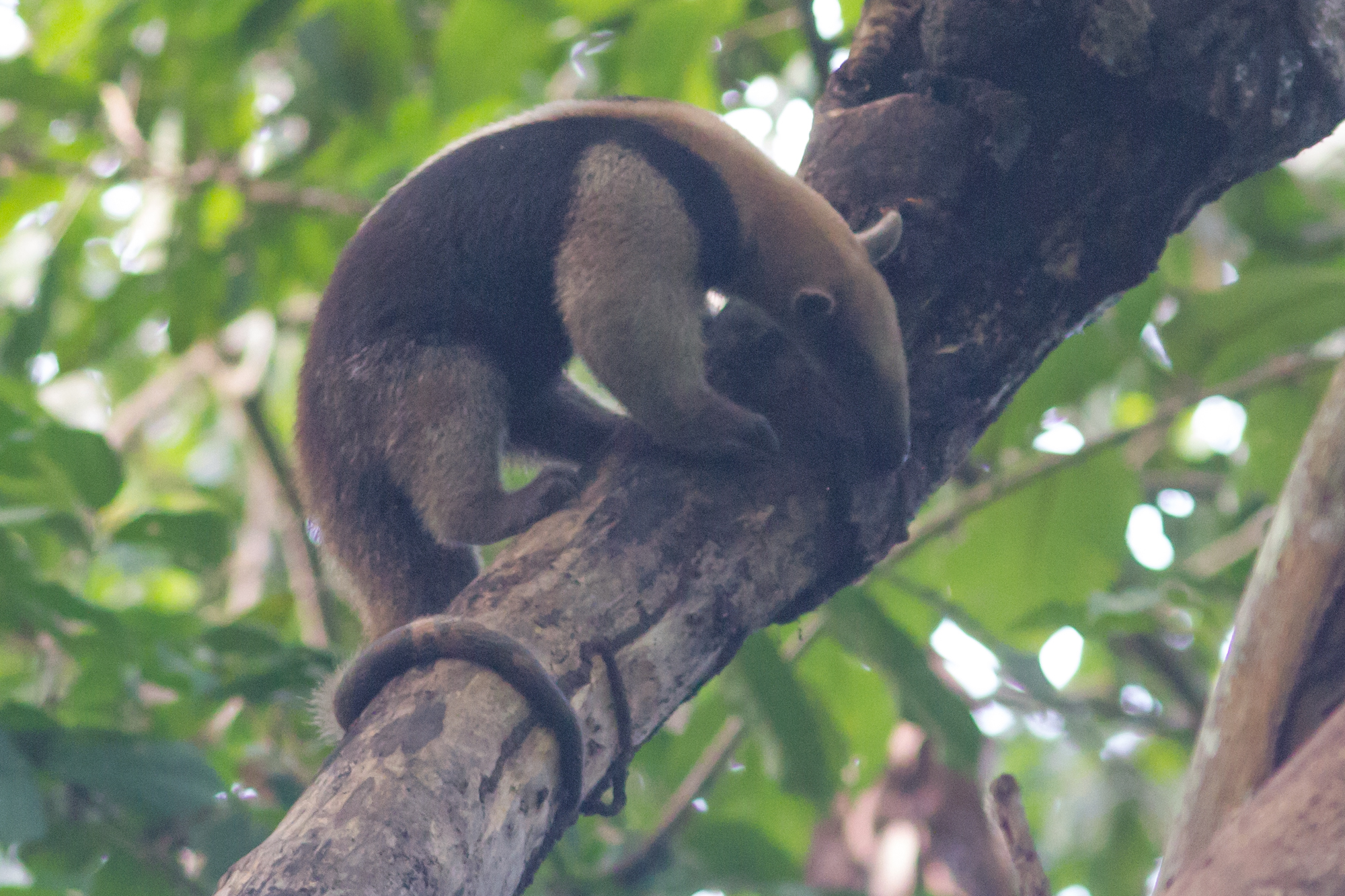
Tamandua – Luke Tiller
Day 5
A Dickcissel perched in the canopy of a Panamanian rainforest was an interesting start to our fifth day at Canopy Tower, though the group probably slightly preferred seeing a Blue Cotinga from the Canopy Tower platform during our early morning coffee birding. For those that had missed the Black-and-White Owls the day before we made a second stop to try see the birds and were treated to views of the whole owl family of three birds. A wonderful start to the day.
Our morning plans involved some birding at Panama Rainforest Discovery Center. Getting there was going to prove harder than expected, however. It started when we ran into Jorge (one of Canopy Tower’s up and coming young guides) who had found a Tamandua which was going to town on an ant nest. Getting extended views of this adorable arboreal anteater was an incredible early morning highlight.
A little further down the road we suddenly came upon a very accommodating Great Tinamou. Amazingly this bird was at a smallish ant swarm, a seemingly rare occurrence. Like a giant antbird the Tinamou seemed to be taking advantage of the insects fleeing the swarm and later seemed to partake in some anting behavior too. The swarm had also drawn in some real antbirds including Chestnut-backed, Spotted and Bicolored as well as several other species including White-whiskered Puffbird, Gray-headed Tanager and Cocoa Woodcreeper. As usual when there are ants around the birds provided excellent views and photo ops for the group.

Great Tinamou (anting) – Luke Tiller
When we got to the Rainforest Discovery Center the highlights there were almost certainly the hummingbird feeders. As well as getting good looks at Long-billed Hermit there were a couple of new hummingbird species for most participants to enjoy: the dazzling Violet-bellied Hummingbird and the equally flashy Crowned Woodnymph.
In the afternoon we took a ride to Summit Ponds. Here we found our main target, the wild looking Boat-billed Heron hiding among the dense pondside brush. As well as the herons we also managed to pick out a nice kingfisher trio: Amazon, Ringed and Green. The ponds also allowed us to compare a myriad of different flycatcher species including such confusing species as Rusty-margined and Social Flycatcher, Great Kiskadee and Lesser Kiskadee. We even got to see the Lesser Kiskadees out fishing the kingfishers, neat to see these flycatchers turn “fishcatchers”.

Garden Emerald – Luke Tiller
Day 6
Day six we decided to try a couple of new spots for the tour. First up was Camino De Cruces, a park on the edge of Panama City. Thanks to the drizzle the park wasn’t very birdy though we did manage to add a couple of sought-after species including the endemic Yellow-green Tyrannulet and a pretty Orange-billed Sparrow. Of our two antbirds, Dusky showed well for the group but White-bellied refused to appear apart from to a select few.
At Parque Metropolitano we were lucky to arrive just as the raptor migration was starting to heat up and we enjoyed watching several large groups of Broad-winged Hawks and Turkey Vultures pass over. The Swainson’s Hawks were putting on a particularly amazing show with birds of various ages and plumage patterns passing by. In the park itself we had more views of the endemic Yellow-green Tyrannulet but the scene stealers on this day were the beautiful Rosy Thrush-Tanagers that were working the deepest darkest corner of the park.
Next stop of a busy morning was a special request stop to try and find some Blue-footed Boobies. Following up on some recent-ish reports from eBird we found ourselves heading out along the Amador Causeway to Flamenco Island. Here on the offshore rocks we found, to much delight, eight spectacular Blue-footed Boobies. Though scope views were required, they were easily close enough to see their audaciously bright blue feet.

White-vented Plumeleteer – Luke Tiller
Our last morning stop was at the gardens of the amazing, Frank Gehry designed, Biomuseo. Here with raptor migration continuing apace overhead we sought out a couple of new hummingbirds. As well as the soaring raptor migrants passing by there were also plenty of local Magnificent Frigatebirds overhead, a few Brown Pelicans and a triplet of Peregrine Falcons.
In the gardens we had soon uncovered a nice mix of seedeaters including a handful of dazzling Saffron Finches. Hummingbirds however were our main quarry. After a couple of brief flybys, we managed to get great looks at a couple of snazzy Black-throated Mangos. A couple of the Palo Verde trees were abuzz with hummingbird activity and we finally managed to eke out views of another couple of pretty hummingbird species with relatively limited ranges: Sapphire-throated Hummingbird and Garden Emerald.
We’d managed to squeeze quite a lot of activity into the morning and even our lunch break was a hive of birding action with a pair of stunning King Vultures putting in an amazing close flyby appearance up on the tower. In addition, a Yellow-throated Vireo was a nice add-on to our growing list of migrants.
Our afternoon was an essential element of any visit to Panama, a visit to the Panama Canal and Miraflores locks. One of our participants even had a personal connection to this place: a relative who had worked on the construction of the canal over 100 years ago. They found records of him at the database for workers at the canal at the museum. Personally, I always like to make the Miraflores Locks visit a little more entertaining bird wise by seeing how many species of birds we can see from the viewing platform. Proof that it’s not a bad place to go birding was that we managed to discover 44 species of birds from a stationary point in just the two hours we spent together on the platform.

Speckled Tanager – Luke Tiller
Day 7
Going to the canal the previous day meant that we had saved one of the best days for last with a trip to local highlands at Cerro Azul. Elevation here brings a mix of different and exciting species. One of our main targets was a breathtaking and endemic woodpecker: Striped-cheeked. As we searched for the woodpecker, we were entertained by a nice mix of new species including Bay-headed Tanager, Violet-headed Hummingbird and one of my favorite columbids: Scaled Pigeon.
When our driver spotted a couple of Little Tinamous dash across a trail we decided to focus our energies there for a while and we were rewarded with incredible views of these skulky little birds. Seeing any tinamou is always a treat and we were thankful for our driver’s sharp eyes.
Dodging brief showers, quality sightings came thick and fast: Panama Flycatcher, Black Hawk-Eagle, White Hawk, Golden-winged Warbler. Highlights of the morning had to be the mixed flock of tanagers that revealed incredible Speckled Tanagers and a hummingbird that is seemingly only seen away from feeders: Purple Crowned Fairy. Eventually we nailed down views of Stripe-cheeked Woodpecker and what views they were, usually this is a bird where you might get brief sightings at the top of a tree instead we had extended ones of a pair at head height – a perfect end to the morning’s adventures.

Shining Honeycreeper – Luke Tiller
For lunch we headed to an incredible feeder setup on an American expat’s veranda. Here we enjoyed incredible views and photography opportunities with an incredible diversity of feeder species. Of course there were hummingbirds, but there was much more to enjoy too. Of the hummingbirds the gentle giant Green Hermit is always a showstopper, but all the rest put on a great show too with Bronze-tailed Plumeleteer the other new species for the stop. Not to be outdone were honeycreepers, with killer views of a stunning trio garnered: Green, Red-legged and Shiny.
On the rice/fruit feeders were a different mix of enchanting species including Fulvous-vented Euphonia, Hepatic Tanager and Crimson-backed Tanager as well as the ever cute Bananaquit. After picking off a few more species including Spotted Woodcreeper and Tropical Pewee we headed back to Canopy Tower for a slap-up BBQ dinner to celebrate our final evening together.
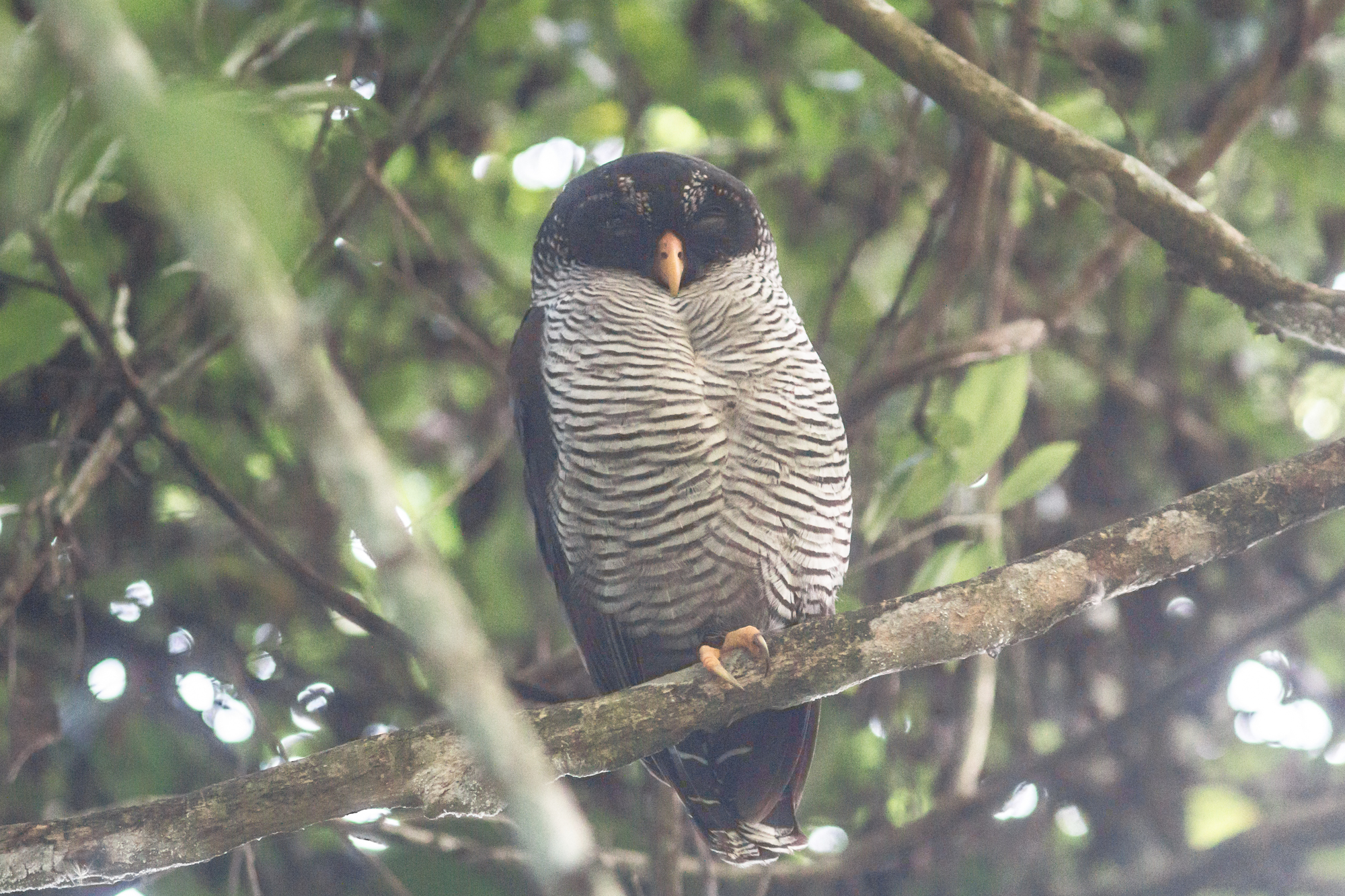
Black-and-White Owl – Luke Tiller
Day 8
With just a couple of hours of birding possible before we headed to airports or on to further adventures in Panama, we still managed to pick up some great new birds for the trip. Among the mix of morning migrants were Orchard and Baltimore Orioles as well as Tennessee, Bay-breasted and Blackburnian Warblers. More of a relief than anything was finally getting our eyes on the stunning Green Shrike-Vireos we’d been hearing all week. The cap to a wonderful tour however had to be the uncommon sighting of a stunning Semiplumbeous Hawk perched atop the forest canopy. A special bird to cap a special week in Panama.
You can see a few more photos and some video from this year’s tour in my Flickr album (here) and some more video on Youtube (here). To join me for the 2020 version of this fantastic tour visit the High Lonesome BirdTours page (here).

